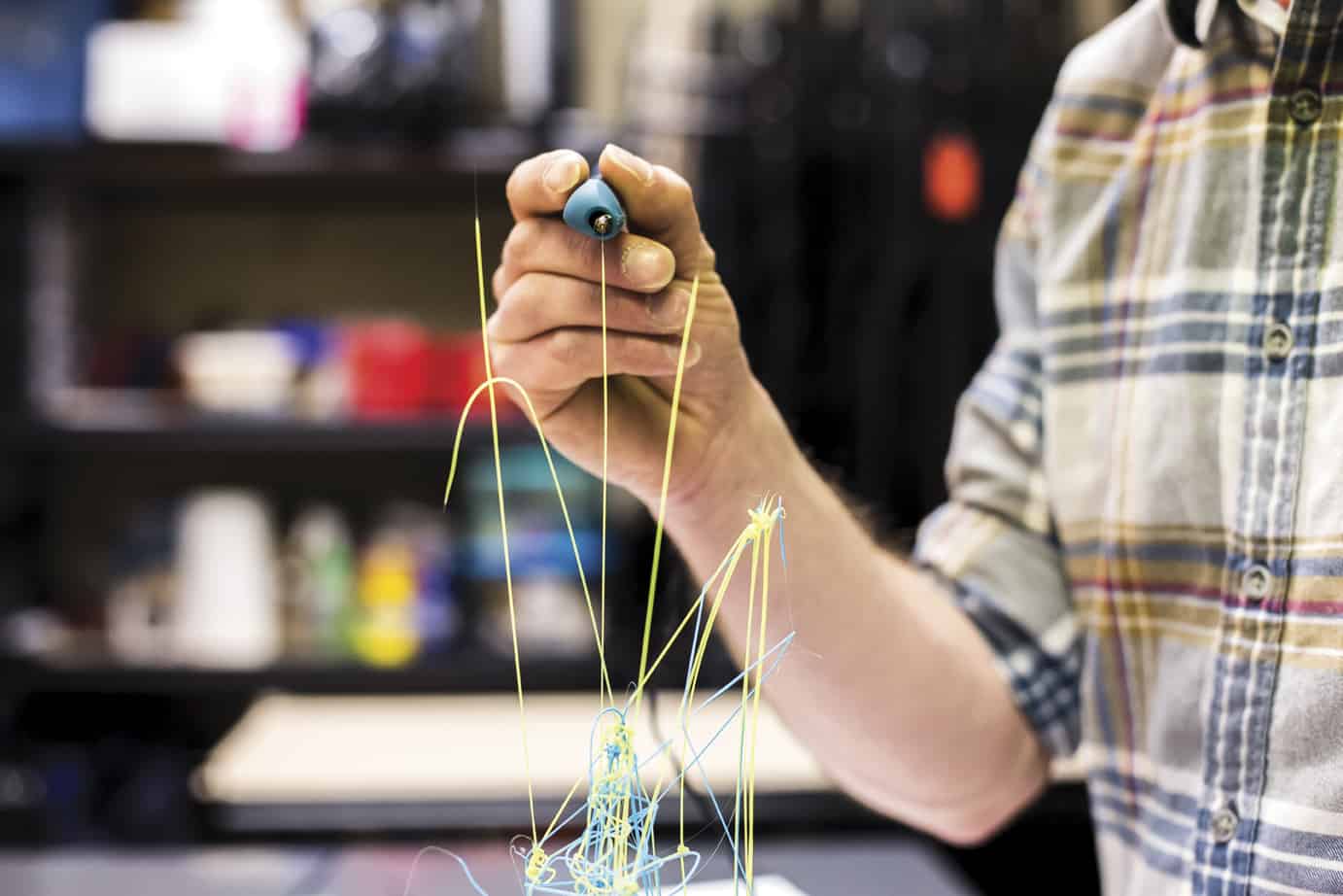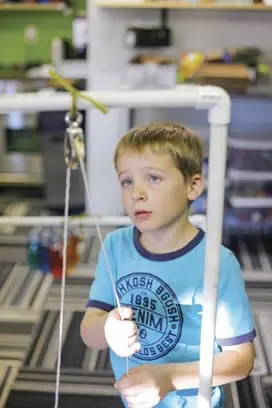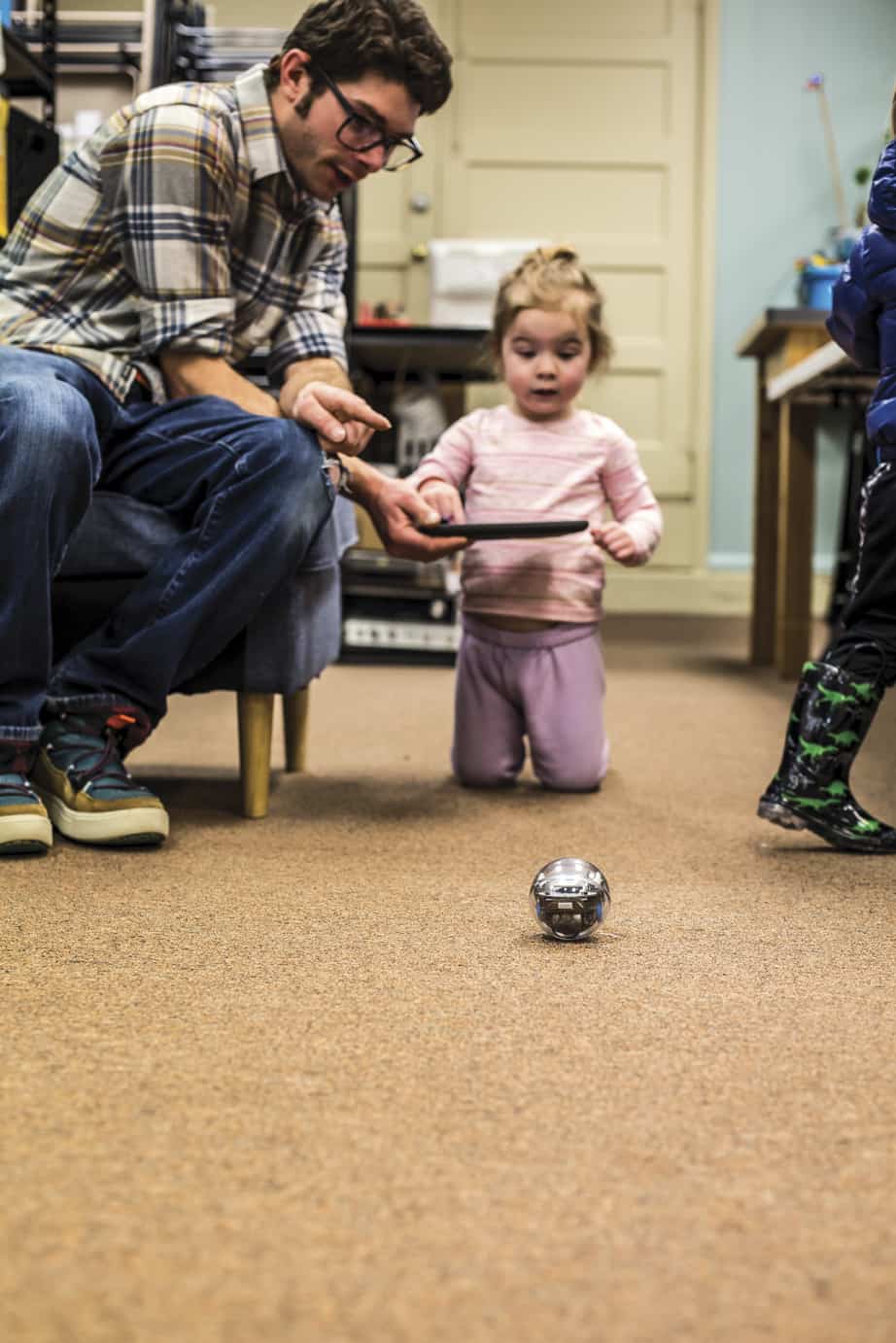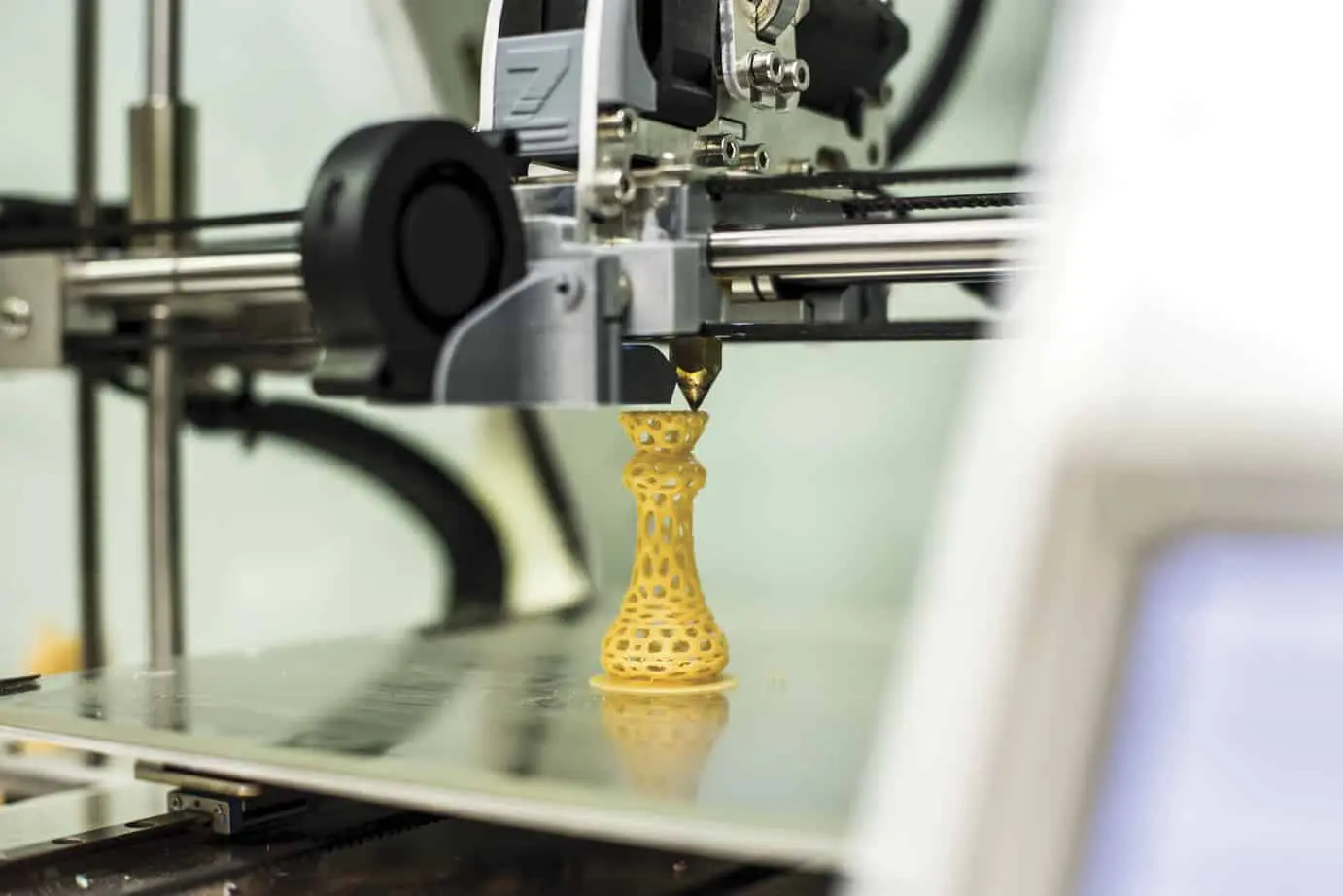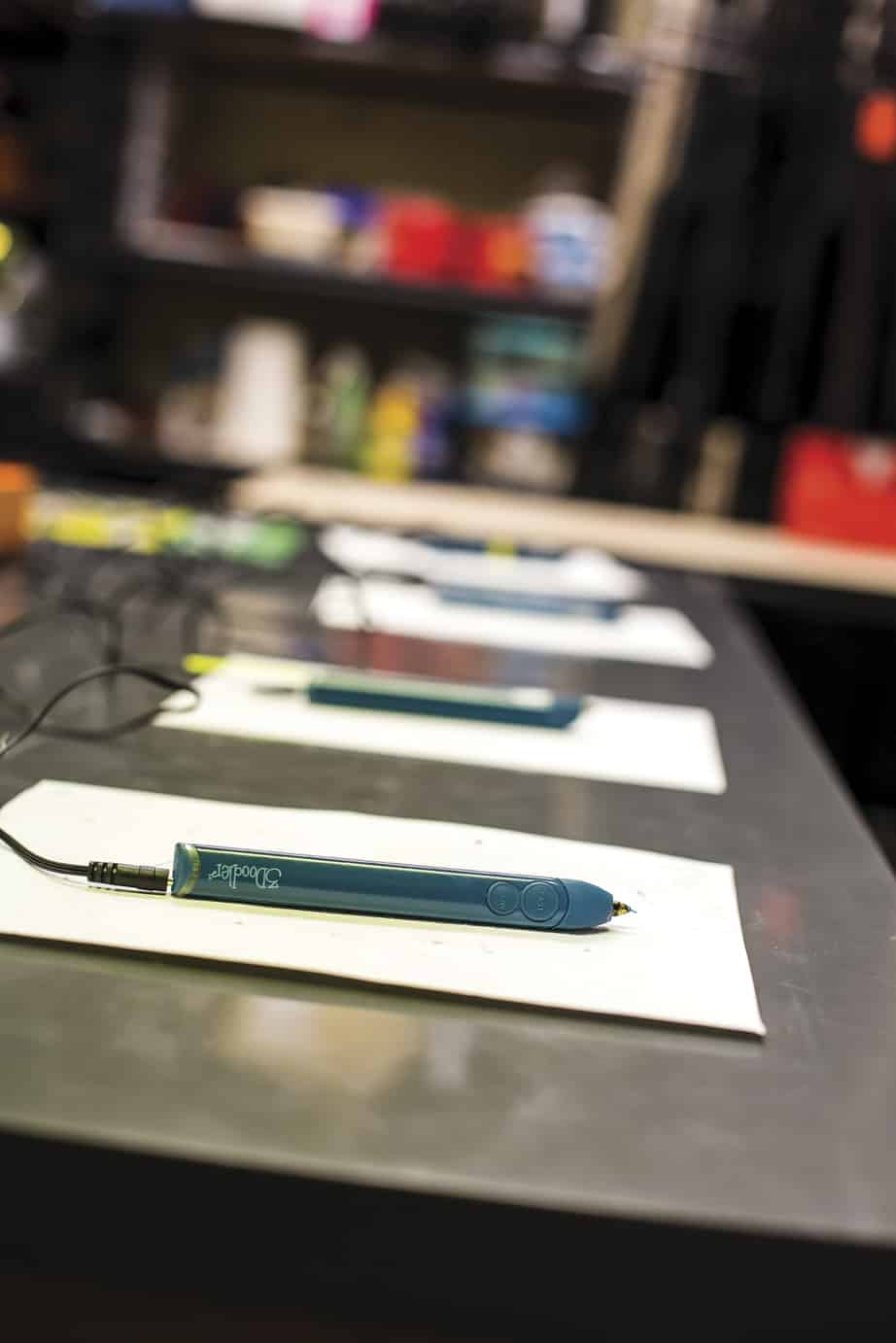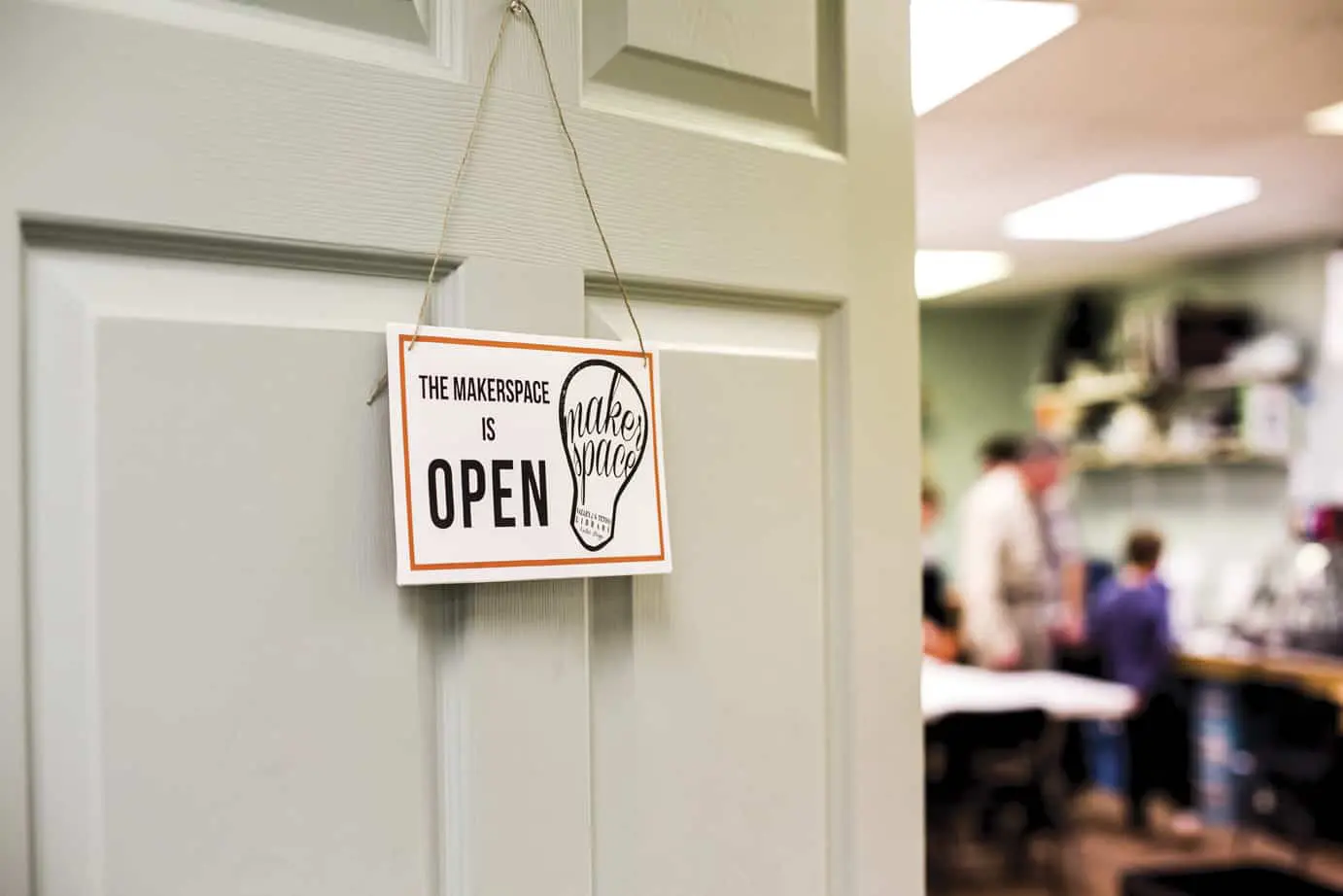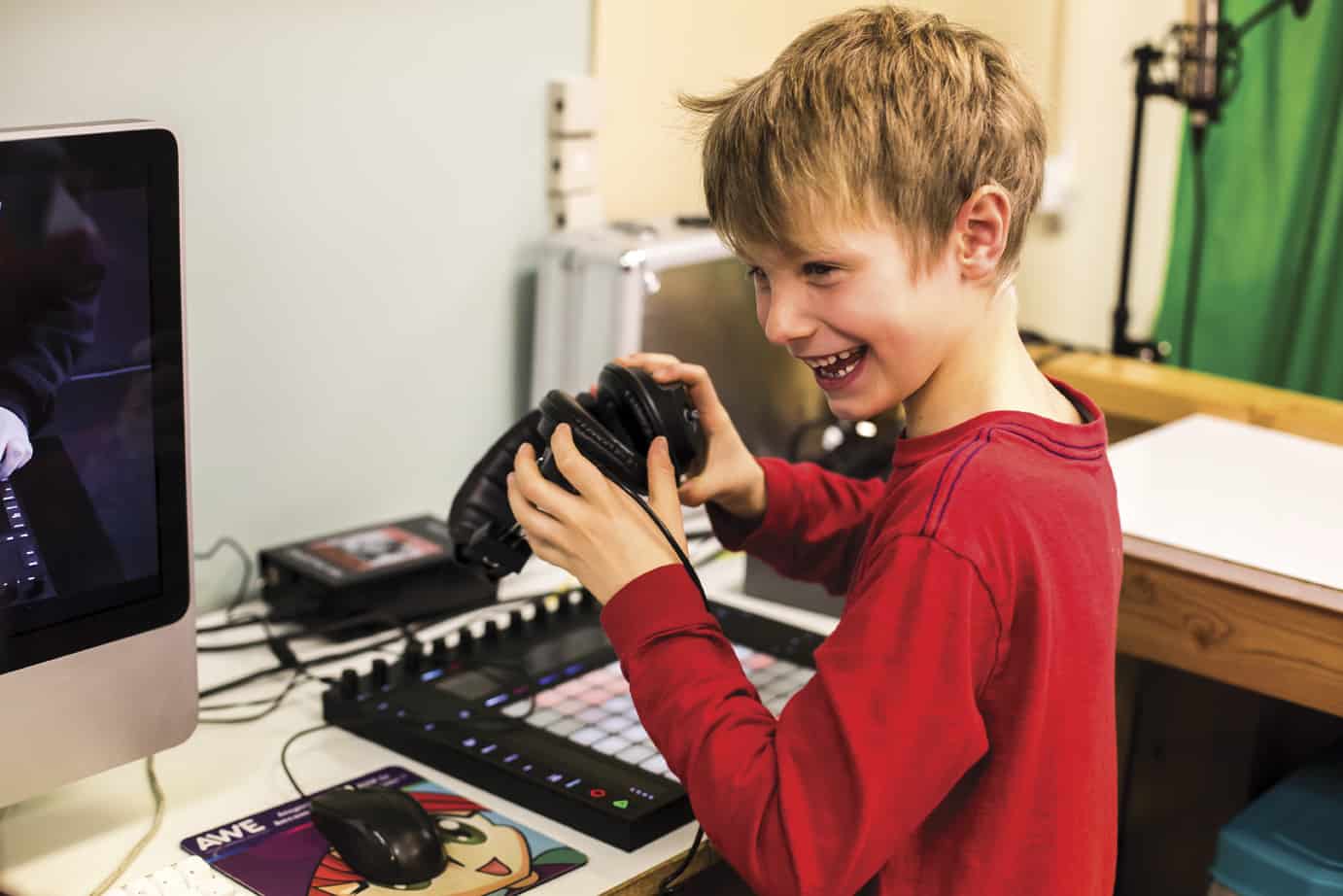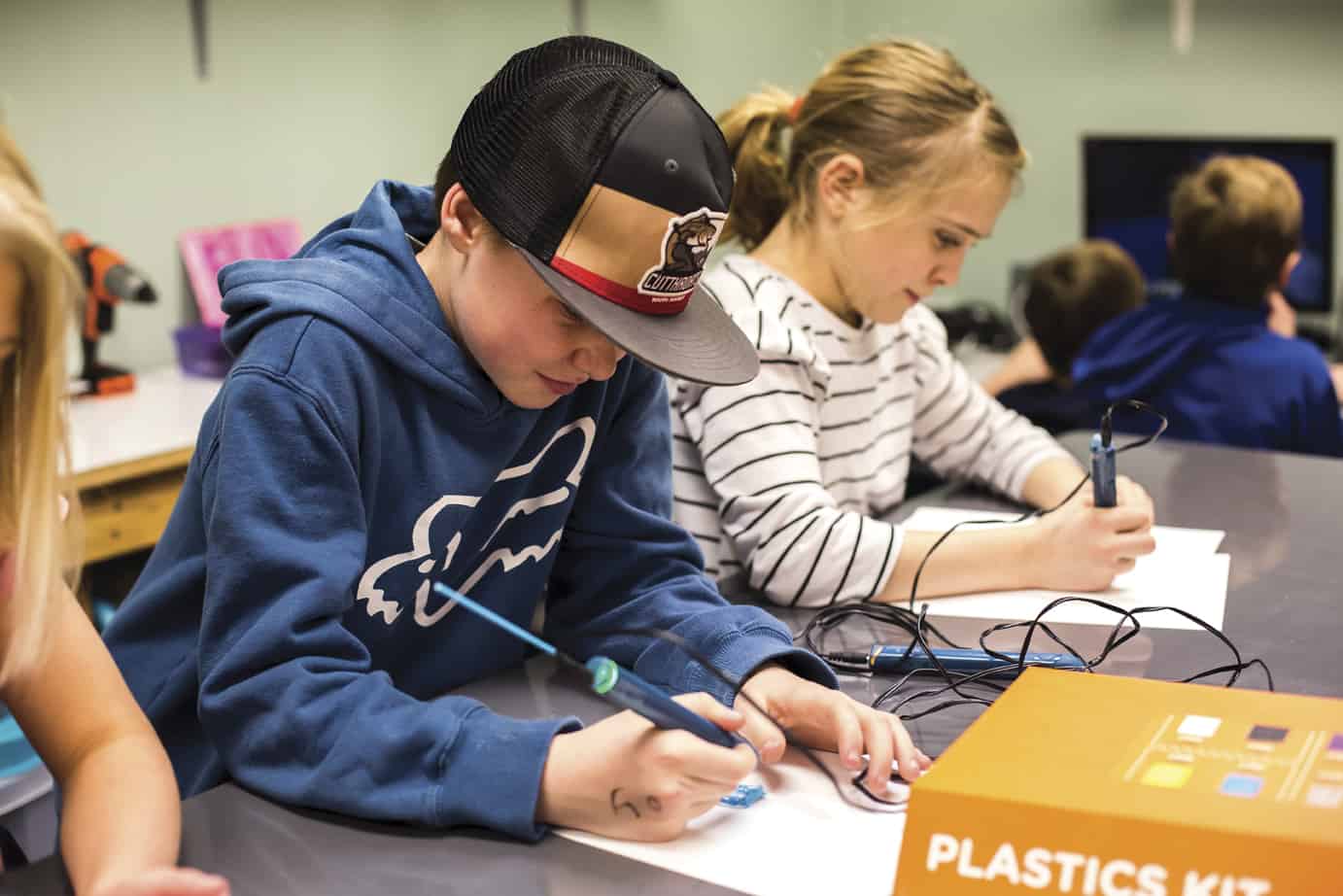By Melissa Snider // Photography by Rebecca Vanderhorst + Ashley Merritt
—
The Jackson Hole Children’s Museum is every parent’s dream: a wildly imaginative, screen-free, welcome-to-make-a-mess space that is not your home. Its Creativity Studio is packed with recycled and reclaimed materials; the Mountain Market is always stocked with boxes, cans of food, and kid-size carts for shopping; and every corner begs for little hands to touch, try, and discover.
Since November 2011, this homegrown museum and Jackson Hole staple has encouraged families to explore, discover, build, and play together. But what parents may not realize as they watch their child pilot a plane, expertly apply a cast, or hot glue a million pom-poms onto varied mix mediums is that, for young children, play and learning are inseparable.
“Play is critically important in supporting a child’s healthy cognitive development,” says museum Executive Director Jean Lewis, citing a September 2018 article from the American Academy of Pediatrics (AAP). “Play facilitates parent engagement, promotes safe, stable, nurturing relationships, and is fundamentally important for learning twenty-first-century skills, such as problem solving, collaboration, and creativity.”
The children’s museum provides in-house and outreach programs to thousands of children and families each year, both offsite and at their museum location. Innovative programs allow kids of all ages to blur the lines between facts and fun and to get lost in the excitement of discovering new knowledge.
What is STEAM?
STEM—an acronym for Science, Technology, Engineering, and Math—was popularized after the 2011 State of the Union address by President Barack Obama. His administration challenged the nation’s schools to emphasize STEM subject areas to bring American students up to speed with other nations around the world. In some schools, an overemphasis on these four fields resulted in idling and even cutting funds for art programming. Adding an “A” for Art to the STEM lineup—including music, fine arts, design, and language arts—creates STEAM and allows educators to integrate craft and design thinking into the other disciplines when appropriate. Around the country, makerspaces, engineering lessons, and hands-on, experiential learning now flourish both in and out of classrooms.
“It’s science, but it takes on a whole other realm,” says JHCM’s K-5 education director Hatilie Lemke, explaining what STEAM means to her. “STEAM connects what you learn to something you create.”
Readying Kinders
The museum partners with families and preschools to help toddlers develop skills that will prepare them for elementary school, often described as “kindergarten readiness.” The museum’s space features adaptable areas for magnets, patterns, light tables, and other “mini-manipulative exhibits.” The climbing structure and magnet wall facilitate locomotor play and experimentation with simple machines, while the Mountain Market and Vet Clinic immerse children in social and pretend play.
Kindergarten readiness begins with parent engagement, according to the aforementioned AAP report. In other words: Put down your phone and play.
“We provide an engaging play and learning space for children and their parents,” says Lewis. “Our exhibits and weekly programs encourage families to explore and create together.” This family practice lends itself to “aha moments,” as kids and parents experiment and converse while promoting cognitive and motor development.
Year-round, weekly programs for the museum’s youngest patrons include “Wacky Wednesday Science,” where kids can question, observe, hypothesize, and experiment to their hearts’ content. “Crafty Kids” presents children and caregivers with an idea for a craft involving specific supplies and then encourages them to make the project on their own. Sensory exploration is “best experienced with a smock,” according to the JHCM website, as kids are persuaded to pour, mix, scoop, dump, feel, squish, and splash while they investigate textures, patterns, and colors.
“Our weekly programs are both sensory and ‘sciency,’ involving building and crafting,” says Lemke. “And while they are led by a teacher, kids get to be creative on their own.”
The museum prides themselves on their Reggio Emilia-inspired Creativity Studio. Reggio Emilia—an Italian teaching approach that holds the child at the center of his or her learning—views the student as a curious being, capable of constructing his or her own understanding and knowledge. The learning environment in Reggio-inspired programs promotes experiential learning, as well as provocative thinking, communication, and collaboration. And it uses adults as mentors and guides, rather than traditional teachers, to provide the ultimate source of information.
In addition to offering opportunities for families to play and learn together, the museum partners with preschools to create exploratory programs that support their in-school initiatives and kindergarten readiness. This past year, JHCM partnered with the Teton Literacy Center Preschool to hold a progressive and successful yearlong pilot program with a goal of increasing kindergarten readiness among the center’s mostly Spanish-speaking clientele. “What we found is that our shared programming directly supports language development among their students,” explains Lewis.
She hopes the museum can continue to make a difference. “Through our collaborative community partnership, we aspire to expand experiential learning among pre-K-aged children to narrow the kindergarten readiness gap in our community.”
Why STEAM?
Lemke, a certified teacher with a love for science, describes her work as a “dream job.” She conducts museum and STEAM programs for more than a thousand children each year in districts on both sides of the hill. Lemke’s background—a Teton Science School grad program student and a teacher at Journeys School—makes designing and teaching STEAM-themed programs a natural fit for her.
Lemke works hard to bring STEAM to the classroom in a unique partnership with the Teton County School District #1 in Wyoming. The museum provides all kindergarten through fifth-grade students with two-hour STEAM workshops on curricular science topics like sound, force and motion, and variables in chemistry. Lemke says STEAM programming benefits students’ fine motor skills and creates what she calls “engineering literacy.” “They’re manipulating things around them,” says Lemke. “I see a lot of problem-solving happening when they get to build and create something.”
Lemke feels fortunate to have the time to prep her lessons, too. Tearing cardboard, gathering materials—it all takes time that classroom teachers often don’t have. And the partnership allows the schools to put project-based learning in the spotlight. Lemke says students shine when they get to show what they know in new ways. “I just love seeing kids who don’t often feel successful feel really successful,” she says. “I think when they have a chance to learn something and then apply their learning to a hands-on project, the whole world opens up to them.”
The Jackson Hole Children’s Museum hosts a wide range of summer STEAM opportunities including full- and half-day camps, drop-off programs, and community programs. Visit its website at jhchildrensmuseum.org for information.
Valley of the Tetons Library Makerspace
—
For Makerspace specialist and librarian Tucker Tyler, STEAM education is what he “always needed as a kid.” So he’s happy to be the go-to leader of a staffed space for robotics, tinkering, and general hands-on making at the Driggs branch of Valley of the Tetons Library.
“The kind of people who use libraries usually like to make and explore new things,” says Tyler, explaining why the library is the perfect place for a room that holds everything from a programmable sewing machine and virtual-reality headsets to music recording equipment and 3D printing pens.
The library’s Makerspace, which opened in 2018, is devoted to STEAM-centered learning for both kids and adults. Staffed by Tyler and open to the public several days a week, year-round, Makerspace developed out of the need to upcycle materials accumulated over several years from various library programs.
Tyler says he recognizes the need for more STEAM initiatives in rural communities, like Teton County, Idaho, where teachers may need support integrating STEAM into their existing curricula. For this reason, the library offers classroom-size sets of materials for teachers who want easy access to tools for hands-on learning.
“This version of the library is a place for DIY learners,” says Tyler, “[one where he can] watch people grow and develop as makers and learners.”
For more information on the Driggs Makerspace and for summer guided STEAM workshops at the Victor location, visit valleyofthetetonslibrary.org.

